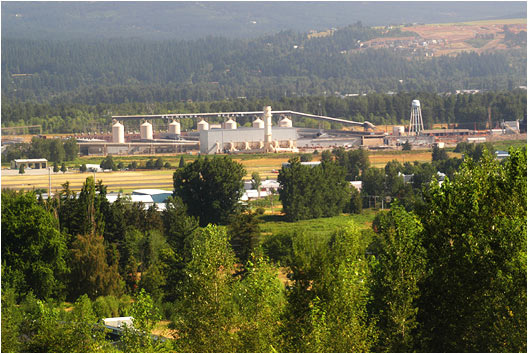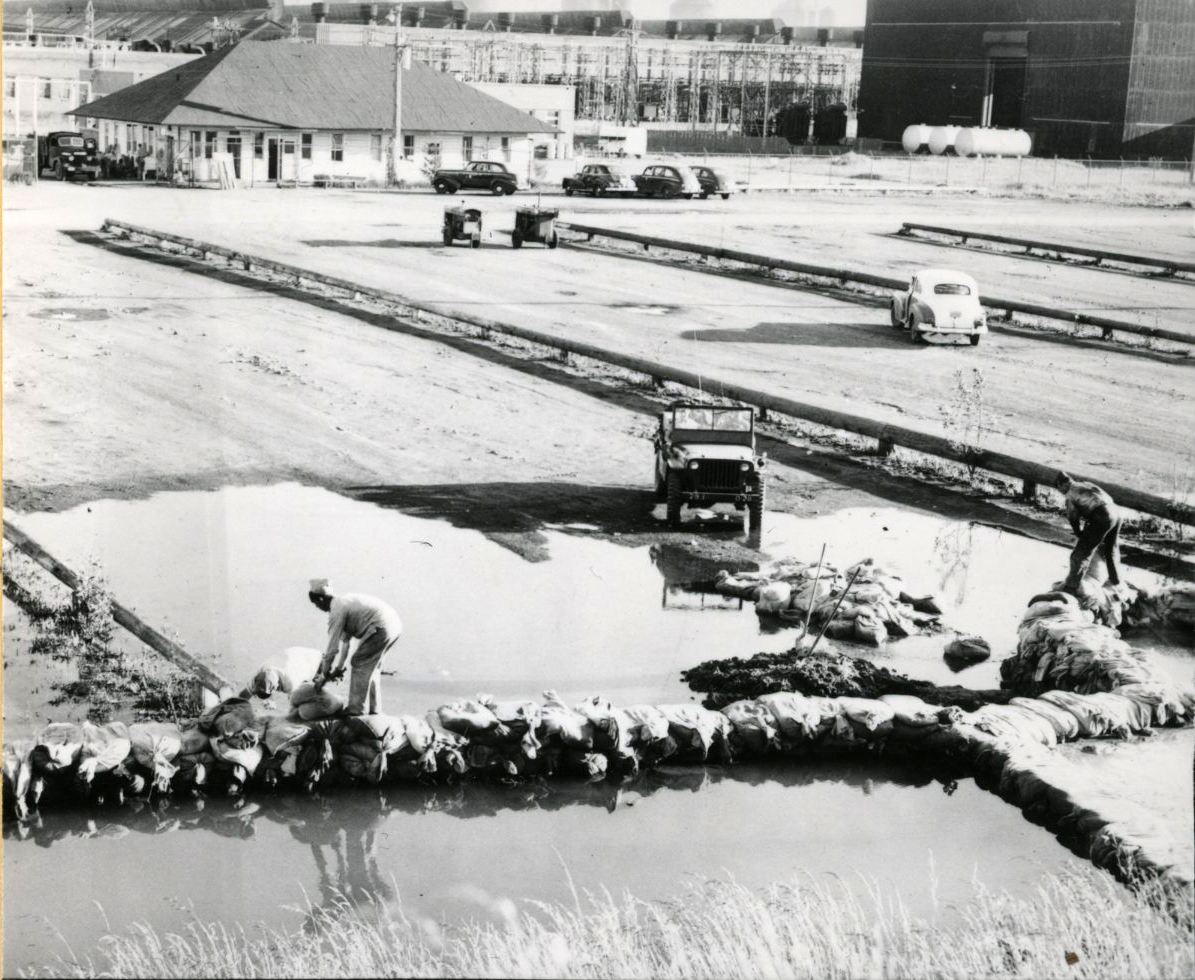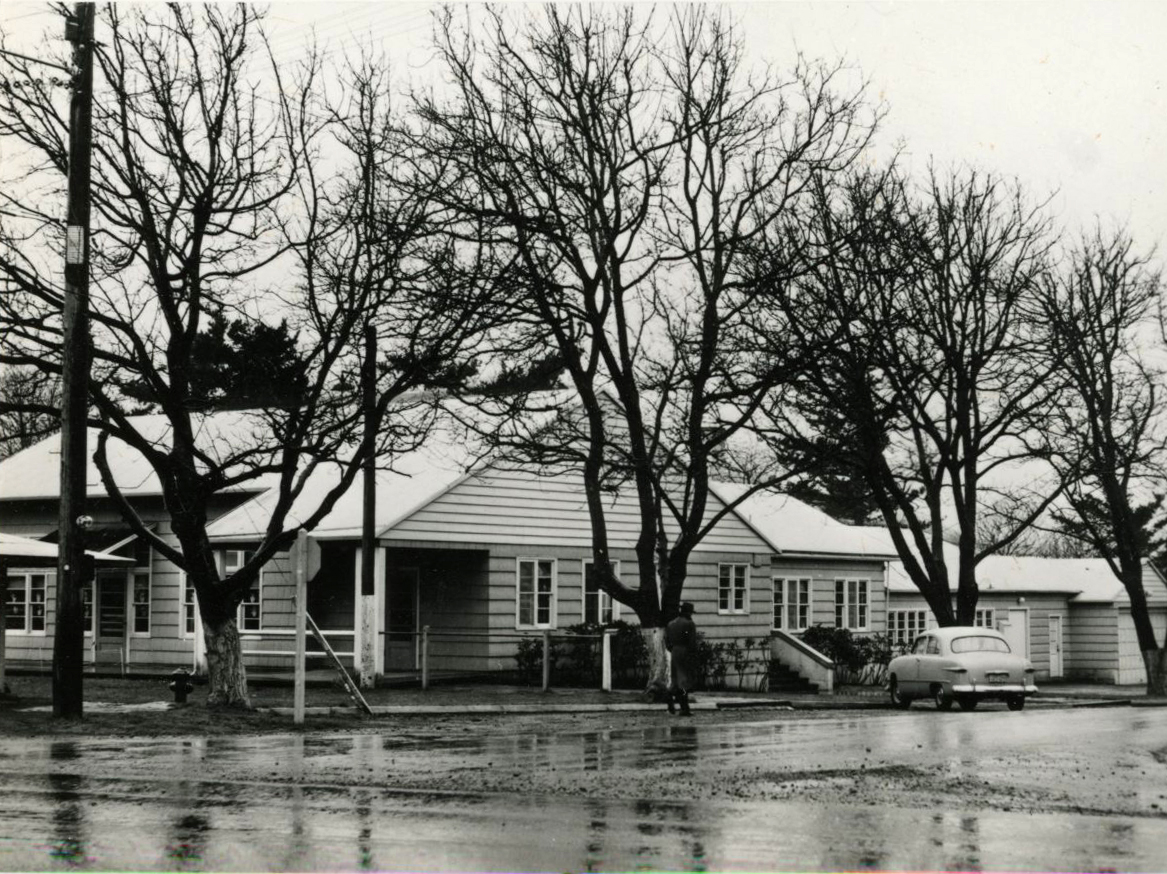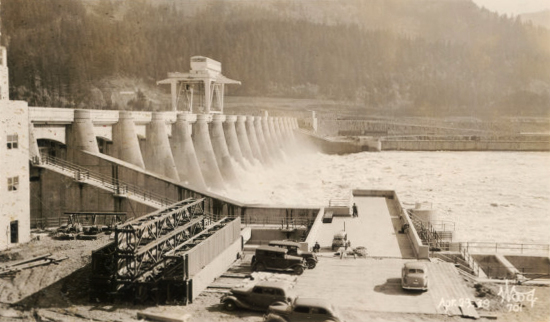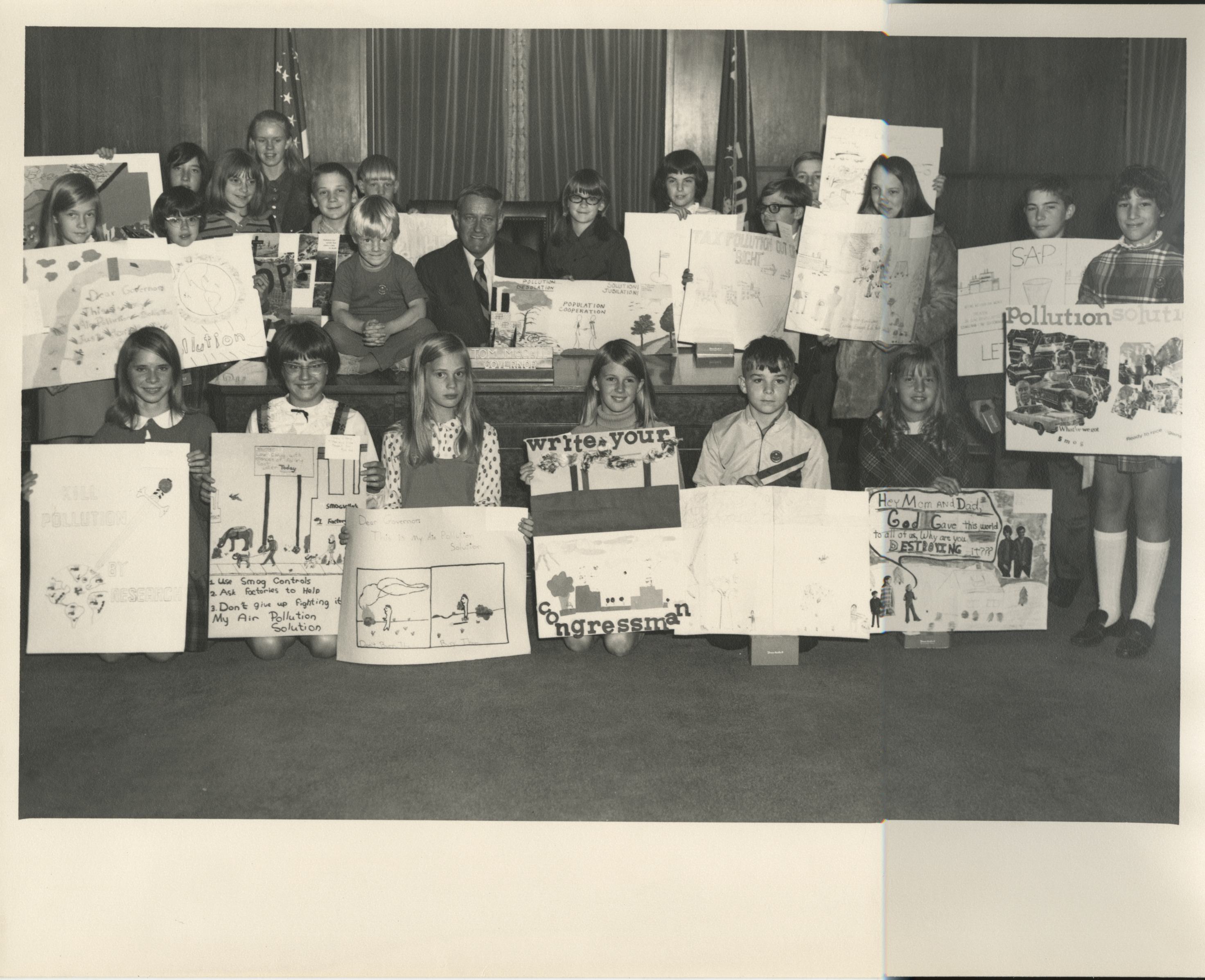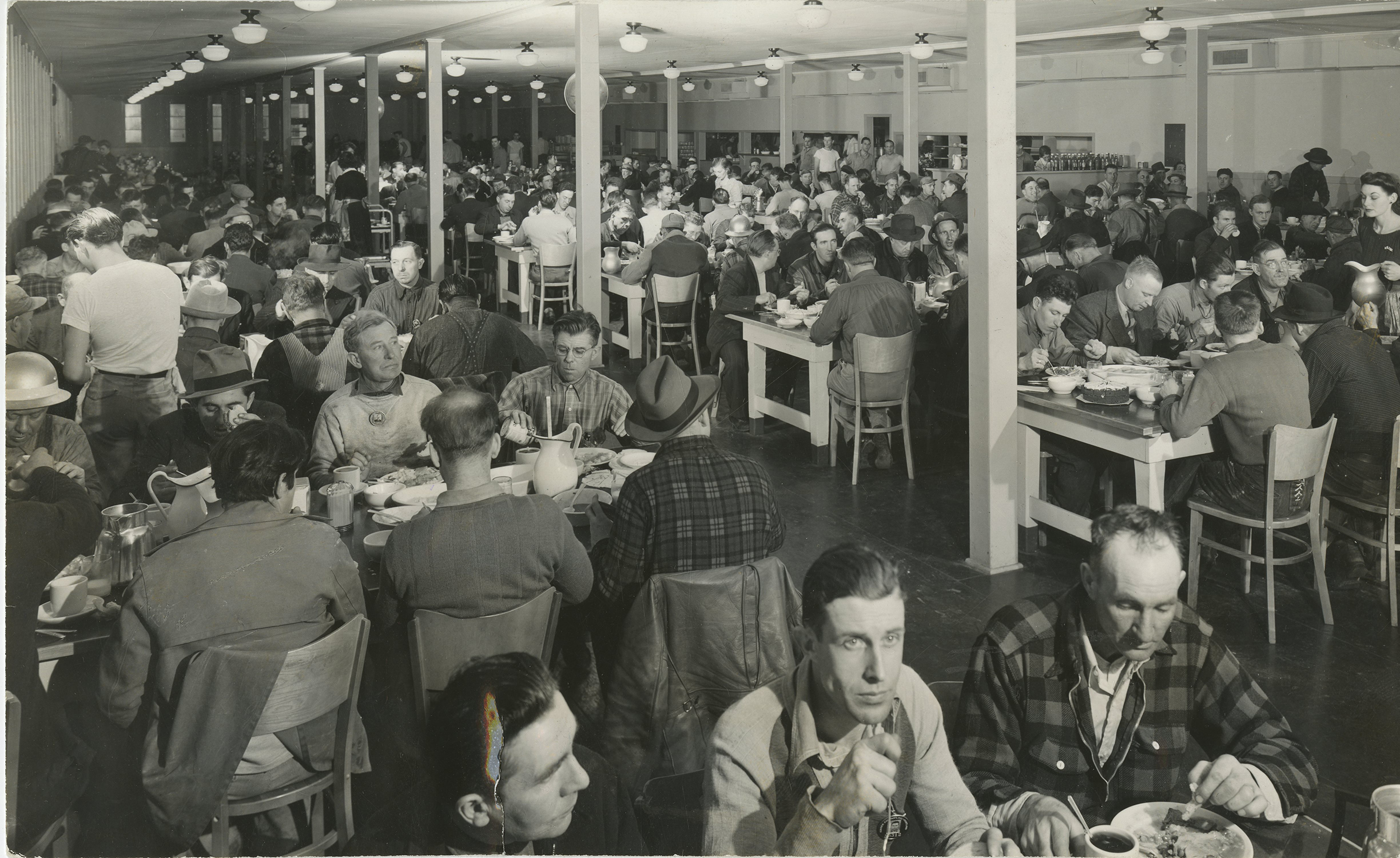In November 1941, bulldozers advanced into the green meadows of the Sundial Ranch southeast of Troutdale, Oregon, carving out a site for an aluminum reduction plant. Six months later, the Aluminum Company of America (Alcoa) produced the first lightweight metal at the plant that would be used to fabricate World War II airplanes. Though known for most of its post-war existence as Reynolds Metals, the plant was owned by Alcoa at both the beginning and the end of its sixty-year life. During those decades, three generations of workers put on steel-toed boots, packed lunch boxes, and went to work in the Troutdale plant.
The plant was a smelter that turned alumina powder into aluminum. Its emergence on a Troutdale pasture created a new town, Wood Village, and startled nearby Gresham, Troutdale, and Fairview out of their Depression economic and social doldrums. The plant gave rise to a school district and a high school, with hundreds of graduates going to college on Reynolds-funded scholarships. Environmentally, it contributed to the death of a flower-bulb industry in Corbett, spawned a major lawsuit with a neighboring cattle rancher, and created a Superfund site.
The U.S. government selected the site at Troutdale because of its proximity to Bonneville Dam, which had been constructed upriver on the Columbia to produce hydroelectric power. More than a thousand workers filled two housing facilities, Fairview Homes, an apartment complex, and Wood Village, one of Oregon’s first planned communities.
During copper shortages in World War II, the Reynolds plant held a fortune in silver-plated electrical fixtures, brought in for the mundane purpose of conducting electricity to a potline, a row of electrolytic cells used in the production of aluminum. At war’s end in 1945, the plant was declared surplus. Richard Samuel Reynolds leased the plant and put its workforce back on the potlines at ninety cents an hour. He purchased the plant in 1949, and it became part of a booming post-war prosperity that saw returning war veterans purchasing houses, cars, appliances, and aluminum foil.
Reynolds and the aluminum plant were instrumental in the school district that bore his name. New tax revenue gave Fairview, Troutdale, and Wilkes school districts the muscle to form their own school district and high school. Reynolds High School opened in September 1956.
But the Reynolds plant produced fluoride emissions, damaging flower bulb farms in nearby Corbett and Springdale. After Reynolds bought the Martin Ranch in 1968, a protracted lawsuit against the company claimed that fluoride emissions from the plant had killed the Martins' cattle. Reynolds sold the ranch for public use in 1991; it is now managed by the U.S. Forest Service as the Sandy River Delta Park. A contaminated area around a company lake near the plant was named a Superfund site by the Environmental Protection Agency in 1994.
The plant operated for sixty years, but increasing competition for other producers on the international market made the operation unprofitable. The electricity so efficiently and inexpensively provided by Bonneville Dam—in 1981 the plant used more energy per day than the entire Portland metropolitan area—could not compensate for the increased transportation and labor costs that diminished the plant’s viability.
In 1984, running at only 40 percent of its capacity, the plant had a $19 million annual payroll to 430 employees and paid $430,000 in local taxes. Alcoa purchased the plant back in 1998 and began demolition in 2003. The Port of Portland purchased the site in 2004 and invested $14 million in environmental cleanup. It is now home to a Federal Express distribution center and an Amazon fulfillment center which opened in 2018.
-
![]()
Reynolds property.
Courtesy Port of Portland -
![]()
Reynolds Aluminum employees prepare for a flood, near Sandy Dike, 1948.
Courtesy Oregon Hist. Soc. Research Lib., 017985
-
![]()
Aerial view of East Multnomah Co., Reynolds Aluminum to the left, 1955.
Courtesy Oregon Hist. Soc. Research Lib., 021753
-
![]()
City Hall, Wood Village, 1954.
Courtesy Oregon Hist. Soc. Research Lib., 023038
Related Entries
-
![Bonneville Dam]()
Bonneville Dam
The U.S. Army Corps of Engineers built and operated Bonneville Lock and…
-
![Department of Environmental Quality]()
Department of Environmental Quality
The Oregon Department of Environmental Quality (DEQ) administers and en…
-
![Kaiser Shipyards]()
Kaiser Shipyards
During World War II, industrialist Henry J. Kaiser established three sh…
Map This on the Oregon History WayFinder
The Oregon History Wayfinder is an interactive map that identifies significant places, people, and events in Oregon history.
Further Reading
Nesbit, Sharon. It Could Have Been Carpdale: Centennial History of Troutdale, Oregon, 1907-2007. Battle Ground, Wash.: Pediment Publishing, 2007.
Gresham (Oregon) Outlook, 1940 through 2003.

